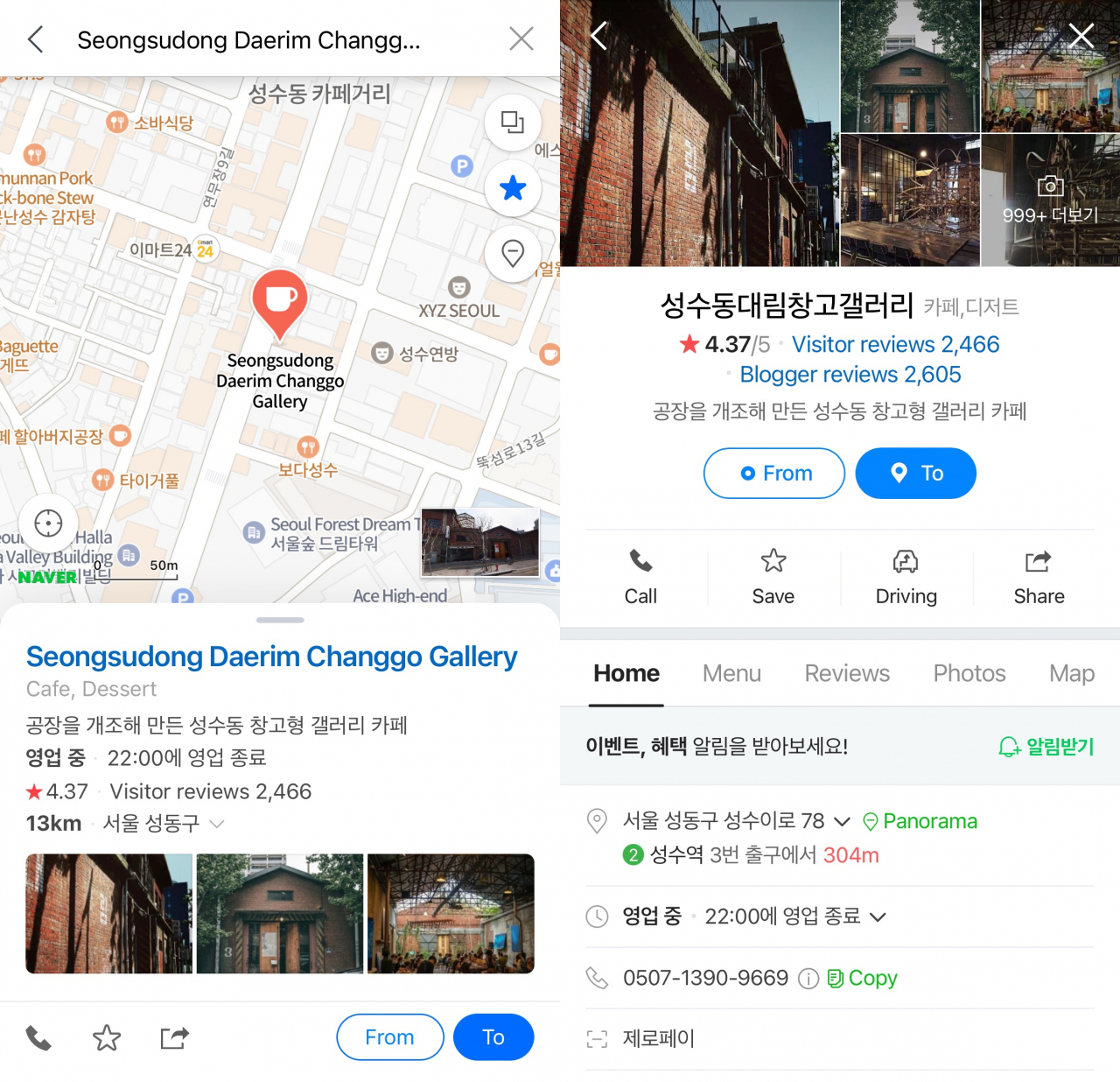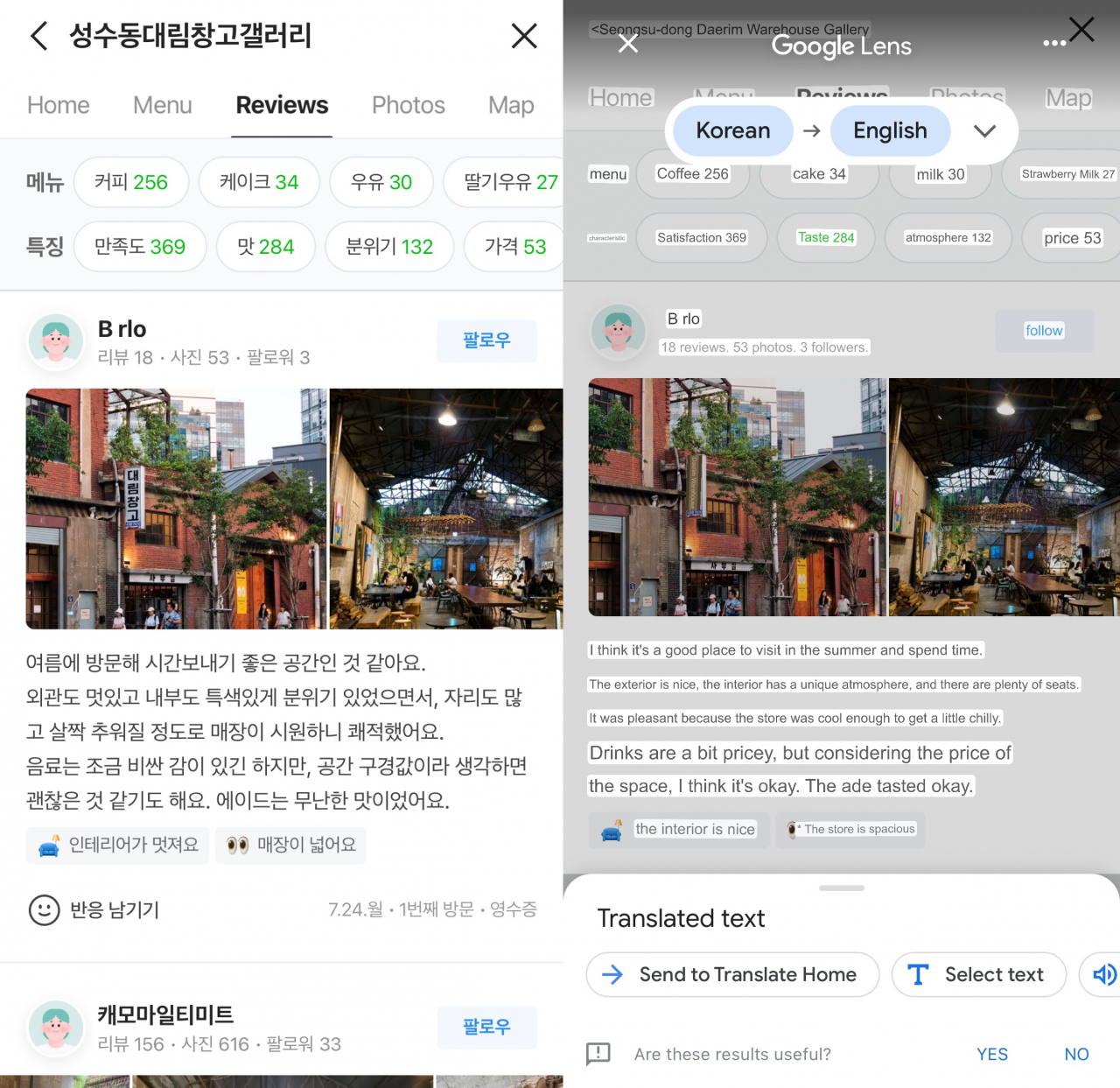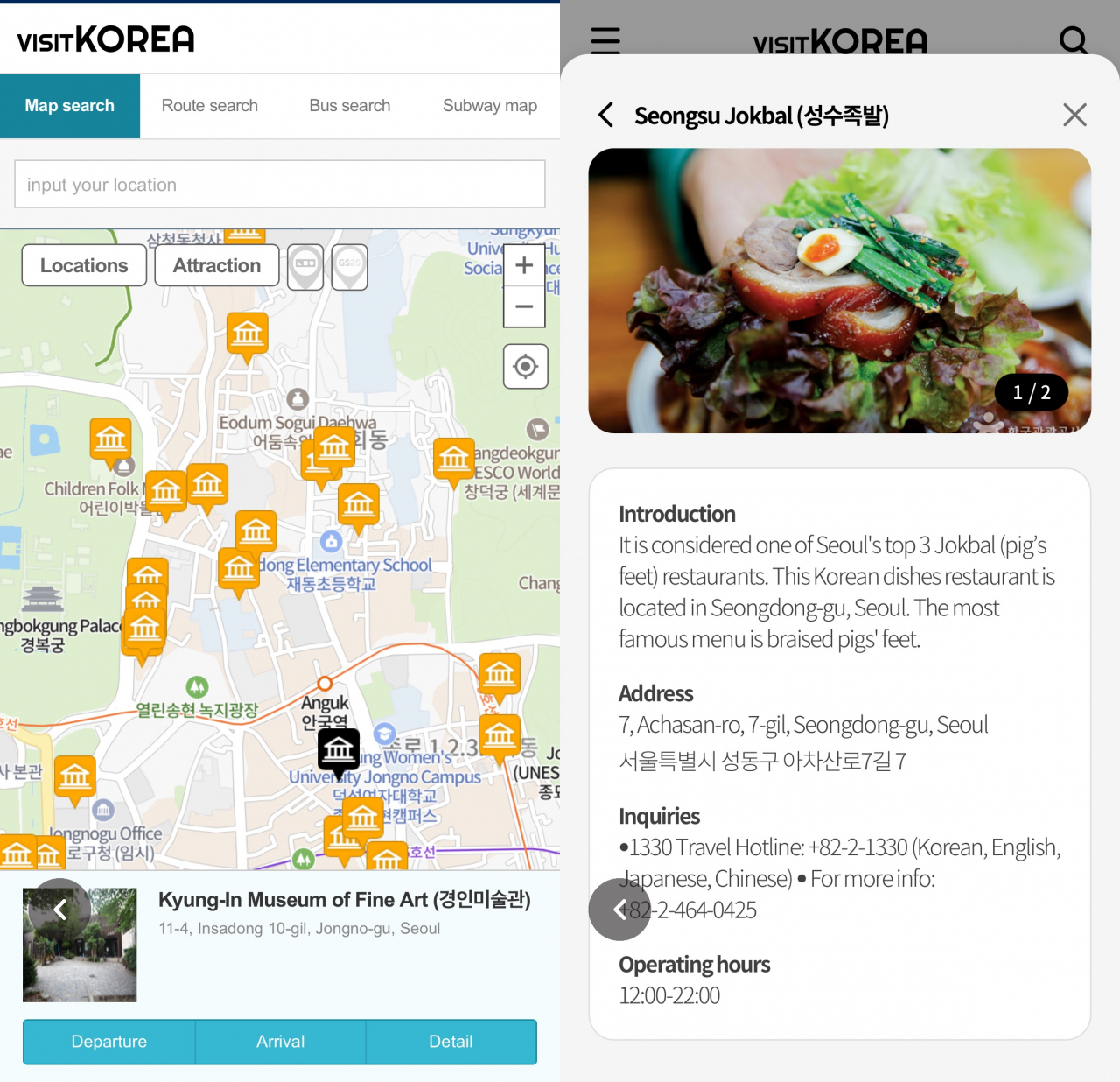[KH Explains] K-culture brings tourists in, but K-maps leave them wandering
Google Maps offers only limited service due to security issues; Naver, Kakao still gauge profitability of costly English updates for less than 2% of users
By Moon Joon-hyunPublished : Aug. 14, 2023 - 16:09

"No no. Google Maps won’t guide you well here. Oh, you downloaded the English version of Naver Map? Most of the content there is not translated."
This is the line Kim Seong-hee, a guide working at the Tourist Information Center (East) in Incheon Airport Terminal 1, repeats almost fifty times a day to tourists confused about whether they can use Google Maps or local map services. Such requests constitute half her inquiries, she said.
This problem isn’t new. As of April 2023, Google Maps was available and widely used to navigate major cities in North America, South America, Europe and Asia, excluding China, according to Justin O'Beirne, Apple's former head of cartography. However, Google Maps' functionality in Korea is partly restricted by business implications and significantly curbed by national security regulations that prohibit foreign companies from storing detailed mapping data on overseas servers, creating a longstanding gap for Korean tourism.
As a result, while Google Maps in Korea offers transit directions, it doesn't provide walking directions. Paths to bus stops and subway stations are shown as straight lines. There is no turn-by-turn navigation for drivers, and business details, like operating hours, are infrequently updated or verified by the owners.
But local alternatives don't quite fill the gap either. The multilingual versions of Naver Map and Kakao Map, developed by Korean IT giants Naver and Kakao, remain largely untranslated -- including location details and restaurant reviews -- and do not reliably recognize addresses in English. Several complaints have been filed to the English Tourist Complaint Center, such as grievances by tourists from Hong Kong, pouring over how Naver Map “cannot even do such basic functions.”

But what truly puzzles and inconveniences tourists here is the disparity between Korea's rising recognition as an advanced cultural, technological powerhouse, largely driven by the K-culture phenomenon, and its inability to offer reliable international map services. This discrepancy is becoming increasingly noticeable as tourist figures recover to about half of 2019's levels in the first half of the year.
"Given how advanced and convenient everything is in Korea, I’d expected Google Maps to be the norm, or have a compelling alternative,” said Lyrie, a British real estate manager who visited Korea for the second time this June.
In part, the Ministry of Culture, Sports and Tourism has revealed plans for digital improvements, as part of its ambition to attract 30 million tourists annually by 2027, with train services like SRT and mobility services like Kakao Mobility committing to implement foreigner-friendly payment systems.
But Korea still has a long way to go. According to the Korea Culture and Tourism Research Institute, tourism contributed 2.7 percent to Korea's GDP in 2019, putting it near the bottom -- 19th -- among the G20 countries.
"Though mapping in tourism may seem minor, independent travelers quickly move beyond well-known sites to seek out hidden gems, which will require a competitive Google Maps alternative," said Kim Nam-jo, professor in the tourism department at Hanyang University.
In 2022, around 92 percent of tourists traveled independently in Korea, with the remainder on guided package tours, according to a yearly Culture Ministry report. The figure was 69 percent 10 years ago.
“I abandoned my plan to visit a restaurant that my Korean friend recommended, because it was too troublesome to find the way," said Lyrie. Amelia, a self-professed travelholic from New Zealand, shared similar frustration. “I had to use three apps to get around. Google Maps lacks walking directions and transit is unreliable, Naver Map has accurate information but struggles with English, and I use Apple Maps for its surprisingly good walking navigation," she said.
This disjointed use case underlines the irony of a country praised for its modern infrastructure yet struggling to offer a coherent navigation solution for international visitors. “Imagine finding out a restaurant has shifted or shut down after all the navigation hassle. That’s why I have to use the mostly untranslated Naver Map,” said Amelia.
Naver Map is indispensable in Korea not just for its comprehensive transit directions, but also because it operates the extensive Smart Place platform tied to its commerce business, allowing businesses to promptly update their specifics such as operating hours. But since its early days, Naver's business strategy and mapping service have predominantly catered to Korean-speaking users here.
Some globetrotters have found their makeshift fixes. “I screenshot the restaurants details on Naver Maps and then use Google Lens to decipher the top reviews," said Cherlie, a foodie working as a real estate broker in Singapore. "It is pretty easy to get around if you know a bit of Korean, because the transit directions are well-translated," she added.

Although Naver boasts its own advanced translation technology, Papago, it's conspicuously absent from their map service. The same goes for Kakao Map, with its “Kakao i” AI translation platform.
When asked about this issue, both companies cited “quality concerns” and the low total number of multilingual users -- at most one or two percent -- for the absence.
At the same time, the Papago app launched a new function last year to translate the names of Korean dishes into the right multilingual translations provided by the Korea Tourism Organization when the user takes a photo of a menu item. But this function is not available in Naver Map.
The language barrier and its repercussions have long been a headache for KTO. Recently, KTO has revamped its tour guide and travel itinerary platform, VisitKorea, which operates a separate map service that overlays KTO-translated tourist locations on top of Naver Maps' local cartographic data.

“We translated, one by one, the details of numerous points of interest,” said Song Eun-kyung, leader of the VisitKorea team. They are currently in the process of translating and curating over 25,000 additional points such as highly rated restaurants, shopping districts, cultural facilities, event spots and more.
Still, Song acknowledges it's not the ultimate solution.
The KTO has constantly been in talks with both Naver and Google Korea for collaboration. Naver, with its vast local database, is the prime candidate. But Naver's inclination towards local advertising revenue and Google's hesitation to focus solely on the Korean market pose significant challenges. Overcoming these barriers won't be quick, Song said.
Professor Kim went back to the origins of the nation’s digital mapping system. In its nascent stages, the government sidelined global map adaptation due to tight budgets. But with ambitions to draw 30 million tourists annually, a collaborative national initiative including tech giants and multiple government bodies is imperative, he emphasized.
“While map functionality may not dictate travel destinations, a fragmented mapping system will serve an increasingly steep barrier in retaining loyal travelers in the long run," Kim said.



















